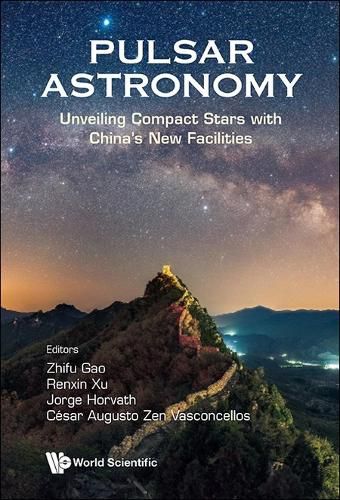Readings Newsletter
Become a Readings Member to make your shopping experience even easier.
Sign in or sign up for free!
You’re not far away from qualifying for FREE standard shipping within Australia
You’ve qualified for FREE standard shipping within Australia
The cart is loading…






This title is printed to order. This book may have been self-published. If so, we cannot guarantee the quality of the content. In the main most books will have gone through the editing process however some may not. We therefore suggest that you be aware of this before ordering this book. If in doubt check either the author or publisher’s details as we are unable to accept any returns unless they are faulty. Please contact us if you have any questions.
Pulsars, since their discovery in 1967, have been regarded as natural laboratories for the study of matter under extreme physical conditions of density, gravity and intensity of magnetic fields. In recent years, with a rapidly developing economy, China has made great achievements in the fields of cosmology, astronomy and astrophysics. This economic scenario, combined with China's millennial tradition of seeking to expand the frontiers of knowledge, led to the planning and construction of several large radio telescopes and the launch of a series of deep space exploration satellites. As a concrete result of this broad effort, today China is gradually advancing to the forefront of scientific research and technological innovation in the field of Pulsar Astronomy. The main highlight of this book is to present the Five-hundred-meter Aperture Spherical Telescope (FAST) and its new discoveries and scientific results. To date, FAST has discovered more than 800 new pulsars through its galactic plane survey and drift sweep. The high-precision millisecond pulsars found by FAST can be used to detect extremely lowfrequency gravitational waves, establish pulsar timing patterns, and search for unknown objects in the solar system. For the vast majority of readers, this book undoubtedly represents a rich source of documentation, information and learning about pulsars and their impact on modern astrophysics and particularly about China's contribution to new achievements in this area.
$9.00 standard shipping within Australia
FREE standard shipping within Australia for orders over $100.00
Express & International shipping calculated at checkout
This title is printed to order. This book may have been self-published. If so, we cannot guarantee the quality of the content. In the main most books will have gone through the editing process however some may not. We therefore suggest that you be aware of this before ordering this book. If in doubt check either the author or publisher’s details as we are unable to accept any returns unless they are faulty. Please contact us if you have any questions.
Pulsars, since their discovery in 1967, have been regarded as natural laboratories for the study of matter under extreme physical conditions of density, gravity and intensity of magnetic fields. In recent years, with a rapidly developing economy, China has made great achievements in the fields of cosmology, astronomy and astrophysics. This economic scenario, combined with China's millennial tradition of seeking to expand the frontiers of knowledge, led to the planning and construction of several large radio telescopes and the launch of a series of deep space exploration satellites. As a concrete result of this broad effort, today China is gradually advancing to the forefront of scientific research and technological innovation in the field of Pulsar Astronomy. The main highlight of this book is to present the Five-hundred-meter Aperture Spherical Telescope (FAST) and its new discoveries and scientific results. To date, FAST has discovered more than 800 new pulsars through its galactic plane survey and drift sweep. The high-precision millisecond pulsars found by FAST can be used to detect extremely lowfrequency gravitational waves, establish pulsar timing patterns, and search for unknown objects in the solar system. For the vast majority of readers, this book undoubtedly represents a rich source of documentation, information and learning about pulsars and their impact on modern astrophysics and particularly about China's contribution to new achievements in this area.